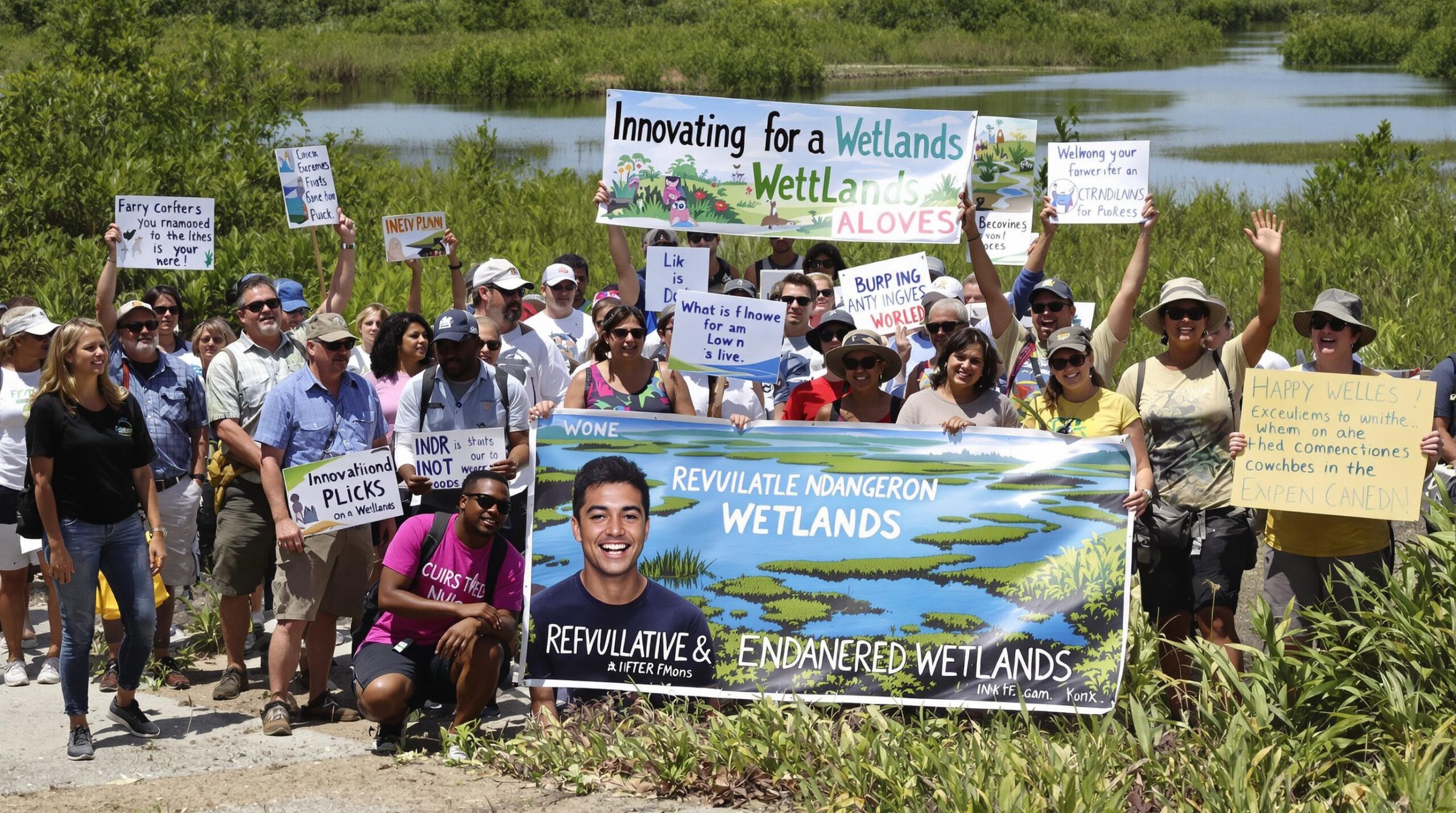Wetlands serve as vital ecosystems that support diverse plant and animal life. They help regulate water cycles, improve water quality, and store carbon. Unfortunately, many wetlands face threats such as urban development, pollution, and climate change. A growing movement has emerged in response to these threats, with communities taking action to save these precious habitats.
The Significance of Wetlands
Wetlands act as nature’s kidneys by filtering harmful pollutants from water. They provide homes for fish, birds, reptiles, and countless plant species. Many migratory birds rely on wetlands for breeding and feeding sites. Local economies also benefit, as these ecosystems attract tourists, researchers, and nature enthusiasts. Wetlands reduce flooding risks by absorbing excess rainwater during storms. Their carbon storage capability makes them essential in the fight against climate change.
Identifying the Threats
Urban expansion often leads to wetland drainage and the fragmentation of habitats. Industrial pollution introduces chemicals and waste that harm both wildlife and water quality. Invasive species can outcompete native flora and fauna, disrupting ecological balance. Droughts and changing rainfall patterns, driven by climate change, reduce wetland water levels. These pressures have caused many wetlands to shrink or disappear entirely over the past decades.
Community Mobilization: Uniting for a Cause
Local residents, environmental groups, and educators have joined forces to tackle wetland threats head-on. Public awareness campaigns educate neighbors about the importance of wetlands. Volunteers participate in cleanup efforts, removing trash and invasive species from these areas. Schools organize educational field trips to connect students with nature and foster a conservation mindset. Community leaders collaborate with scientists to organize citizen science projects, collecting essential ecological data.
Innovative Preservation Strategies
Communities are adopting a range of creative methods to protect wetlands. They implement green infrastructure, like rain gardens and permeable pavements, to manage stormwater runoff. Restoring natural water flow recreates habitats for aquatic and terrestrial wildlife. Native plants are reintroduced to encourage pollinators and stabilize shorelines. Constructed wetlands filter pollutants before they enter existing water systems. Technology such as drones and sensors aids in monitoring water health and wildlife activity.
Collaborating with Local Governments
Effective wetland preservation often requires collaboration with city planners and government agencies. Zoning laws help restrict construction and pollution near sensitive areas. Incentive programs encourage property owners to protect or restore wetland habitats on private lands. Grants and public funds enable large-scale restoration and education projects. Local governments work with scientists and citizens to set conservation goals and monitor progress. Together, these efforts align community preservation with wider environmental policies.
Harnessing Technology for Conservation
Modern technology has become a key tool in wetland conservation. Drones provide aerial imagery for mapping wetland boundaries and spotting illegal dumping or changes. Sensors monitor water quality, alerting teams to pollution events in real time. Mobile apps enable volunteers to collect and submit data on wildlife sightings and habitat conditions. Online platforms facilitate community engagement, sharing updates, and organizing restoration events. These innovations allow for faster, more effective responses to emerging issues.
Community Science and Education Initiatives
Community science projects empower residents to contribute valuable data. Bird counts, plant surveys, and water tests involve people of all ages in hands-on conservation. Workshops and guided tours build ecological expertise within the community. Educational signage along wetland trails details the significance and history of these ecosystems. Local schools partner with environmental organizations to incorporate wetland studies into their science programs. Such initiatives cultivate environmental stewardship in the present and future generations.
Measuring Success: Tangible Outcomes
Restored wetlands boast increased biodiversity, improved water quality, and enhanced flood protection. Regular monitoring tracks species return and overall ecological health. Community involvement leads to higher public support for long-term wetland protection. Success stories attract media attention, encouraging other communities to launch similar initiatives. As efforts grow, restored habitats offer new opportunities for recreation, research, and education. These positive outcomes reinforce the worth of local intervention and innovation.
Continued Challenges and Ongoing Commitment
Despite progress, some hurdles remain. Funding gaps limit the scope of restoration projects or ongoing maintenance. Climate change introduces new and unpredictable environmental stresses. Balancing development demands with conservation can be contentious within fast-growing communities. Education and advocacy must be ongoing to maintain engagement. Still, the dedication shown by local communities inspires hope for the future of wetlands everywhere. Their efforts serve as blueprints for preservation across regions.
Building a Future for Wetlands
The work to protect endangered wetlands requires creativity, perseverance, and unity. Community-led efforts prove that positive change is always possible. By blending traditional conservation with cutting-edge tools, citizens can overcome formidable environmental challenges. Every cleanup, educational campaign, and restoration project adds up to meaningful, lasting impact. As communities keep rallying for their wetlands, the prospects for these vital habitats grow ever brighter. Efforts today ensure that future generations experience the beauty and benefits of thriving wetlands.

